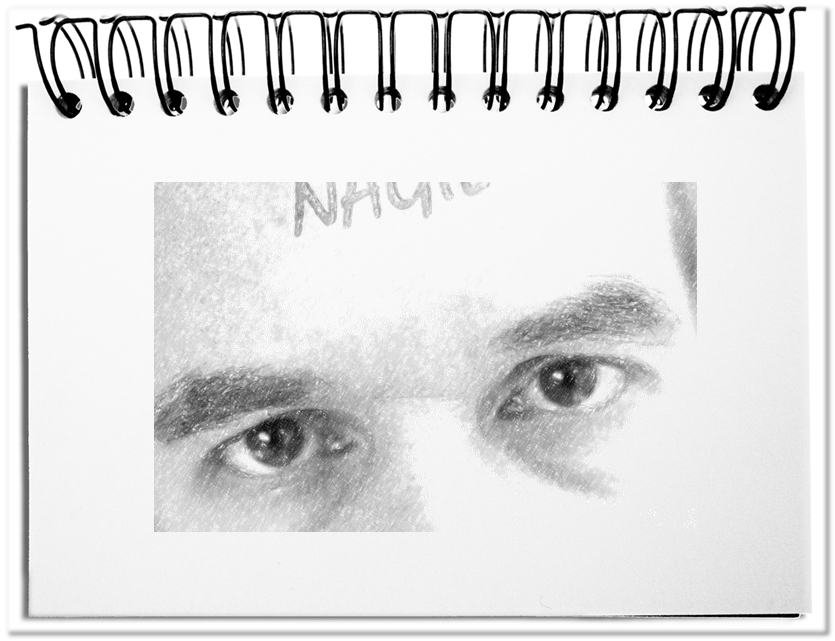All those involved bear their cross written on their forehead when implementing agility. With a little attention, you quickly can see where the boundary is. We already looked at it from the outside (see Nagile clues). However, even with the best conditions you won’t get agility to full swing, if employees remain in their comfort zone. It is the attitude, the convictions, the values and expectations, in short our mindset, that controls our behavior subconsciously. I think, therefore I am – the way, I imagine it.
When looking rationally in the mirror, we do not notice our demarcation line. On the contrary. Our thinking thinks itself reasonable, whereby we do not recognize our manner. The look at the nagile mindset of the others is easy for us. What are we looking at?
- Questions prior to the step
The difficulty for nagilists is to get moving, i.e. just starting and doing, what we understood. Exposing oneself to the unlikely risk of misunderstanding everything. And not putting the energy into asking, what exactly should be done.
Agility requires quantum jumpers, who start from a standing position without immediately knowing, what will happen afterwards or what should come. - Helplessness at the first hurdle
An additional version of nagility is the active nagilists, who start immediately out of the conviction to be agile, but get stuck at the first hurdle. The obstacle unsettles, because one is taking a risk – maybe because one is not used to leap over it, or because it is high, or because one cannot even estimate the height. The search for a way around the obstacle, or for the team that can help getting across starts right away.
Agility needs adventurous, autonomous team players, who begin as a start to help themselves. - Hard as nails in the depiction and banal in the matter
The work, of course, does not only consist of hurdles. Most of the time you can run your business without any surprises. In your usual role, you know how to plan the next steps, set your own goals, where you get your inputs from and how to achieve the desired result. The nagilists can be seen at the latest, when they evaluate the fruits of a piece of labor. They value the form rather than the content – the right format, the right font, enough white space and beautiful pictures.
Agility requires verbally and visually talented communicators, who reinforce their content with the appropriate form – and not vice versa. - Lack of creative drive
Intrinsic motivation is the fuel that keeps individuals going. Supported by the team that keeps its momentum with its own drive, one overcomes lows. Nagilists lack the necessary creative drive to become imaginatively productive from within. They prefer to work the stack from left to right – which is also a useful feature, except for agility.
Agility needs entrepreneurial thinking doers who want to change the world, or at least to contribute their part. - Work to specification
It is not a matter of the work to rule, but about the processing of a well-defined assignment, which best explains what the result should be. If the description is incomplete, you get stuck at the first difficulty (see above). The nagilist is motivated and fully committed to the tasks, just to do what is requested.
Agility needs the exact contrary – performance beyond the assignment, outside the comfort zone and always in competition with oneself. - Self-effectiveness instead of task effectiveness
The right thing to do is important to everyone. Nobody wants to do something that nobody really needs. And the result should be generated with as little energy consumption as possible. Sounds good to me. Nagilists also work like this. However, the right thing means in this case to concentrate on the things that are important for oneself and to avoid everything else as much as possible. The remaining tasks should be carried out in such a way that they do not jeopardize private intentions.
Agility requires concentration on the team and its results. What is more important is the need of the team and the only thing that shouldn’t be compromised is the overall result of the working group. - Simply no new things
Learning is a task that is delegated to schools, colleges and corporate universities. This is less a matter of anchoring experience and knowledge sustainably, but only of gamification – collecting points to be in a better starting position in the next lap than the others. Nagilists lose their curiosity and thirst for knowledge as they start their professional career. Their knowledge decays according to its half-life (e.g. in IT, knowledge is worth only half its value after two years).
Agility needs hunger for learning and interest, since the open tasks require independent research and integration of the new perspectives.
Bottom line: To make it immediately clear: Nagilist is NOT a dirty word, but the description of a certain type of attitude. Not everybody has to be an Alexander von Humboldt, who plunges into the unknown and risks everything to satisfy its thirst for knowledge. However, the decision makers should be aware that the workforces consist to a certain extent of nagilists – who first ask themselves „Is it really necessary?“; who call a team meeting, when they encounter the first problem; who always look good, but do not provide any content; who don’t want to create anything; who do excellently what they are told, nothing else; who perfect themselves and their lives and not their tasks; who ate up their learning potential during their education.
Agility needs the right basic conditions, but above all the right employee mindset.

